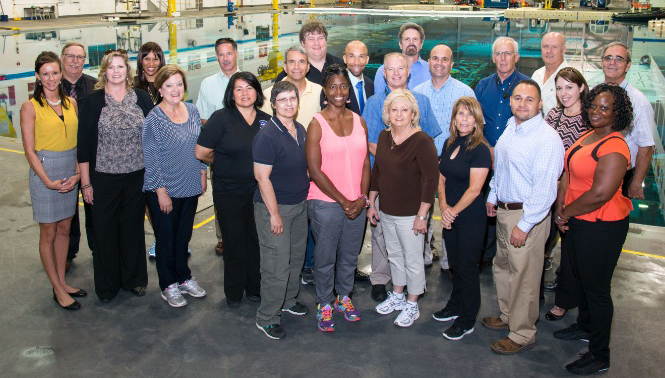Mishap Program Working Group Looks to Human Factors for New Techniques
NASA’s Mishap Program Working Group (MPWG) focused on Human Factors Analysis and Classification System (HFACS) training during its annual meeting, held Aug. 5-8 at Johnson Space Center (JSC).
The MPWG brought in Dr. Scott Shappell, co-developer of HFACS, to teach the two-day HFACS course.
“HFAC is just another approach for us to use when investigating mishaps to ensure we explore the right information,” said Gerry Schumann, MPWG chair.
Most NASA Mishap Investigation Boards (MIBs) use NASA’s Root Cause Analysis process during major investigations to determine the events and conditions that led to an incident, and make recommendations to prevent a similar mishaps in the future. MIBs must overcome hindsight bias and consider factors affecting the employees involved at the time an incident occurred, otherwise assigning cause can seem like passing judgment rather than constructively seeking hazard correction and prevention. HFACS provides a different perspective. Its structure helps investigators identify what cues surrounded the employees at the time, how they understood those cues, how decisions were reached and the demonstrated skill level for the given task.
“They [the involved employees] weren’t trying to do anything wrong, but maybe there was information they missed, maybe they didn’t understand, maybe they didn’t have time to interpret,” explained Steve Lilley, senior engineer at the NASA Safety Center (NSC) and group member. “HFACS gives you a structure to do a better job of discovering the human factors, events and conditions that account for facts in the timeline.”
According to Lilley, HFACS also provides a “middle ground” between a narrow-scoped investigation and a broad-scoped investigation. It can be easy for an investigator to look at a mishap scene and make conclusions based on years of relevant experience, but that can constrain the search for evidence. There’s a saying in investigations — what you look for is what you find. Alternately, it is very costly and timely to conduct a broad investigation; you can’t look into everything. HFACS helps MIBs determine what to collect by providing a structure for collecting evidence about human thinking and actions.

The MPWG gathers at JSC’s Neutral Buoyancy Lab for a group photo.
HFACS is not a replacement for RCA, just another tool for boards to use or to augment current methods. Schumann asked MPWG members to consider ways to incorporate HFACS into investigations.
The group also reviewed the effects of cost-plus contracts on incident ownership when a mishap or close call occurs. Prior to Space Act agreements, when a contractor was awarded a task to build spaceflight hardware, the contractor was accountable for investigating hardware damage until ownership transferred to NASA, along with the responsibility to investigate damage.
Now, with the return of cost-plus contracts under Space Act Agreements, experts are re-examining investigation responsibility throughout the process of hardware fabrication and transport. MPWG members are researching this issue and exploring options for updating NASA policy to address any lack of clarity.
The MPWG
The MPWG was renamed in August 2012 after two of its predecessors merged. The group defines the context and facilitates implementation of the NASA mishap investigation program. Specifically, the group develops strategies to address NASA mishap and close call processes. Schumann, institutional safety program manager at NASA Headquarters’ Office of Safety and Mission Assurance, serves as the chair.